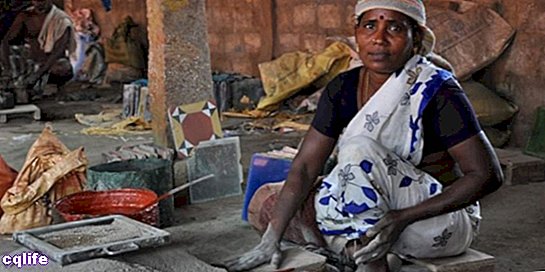We explain what the proletariat is, its relationship with the bourgeoisie and what the dictatorship of the proletariat is. Also, the proletariat today.
The term proletariat designates the working class aware of its situation.What is the proletariat?
Today we understand by proletariat the weakest rung of the society capitalist, that is, to the working class. Is the social class that lacks the control of means of production and distribution of the goods generated by the company, and therefore to survive it must sell to the bourgeoisie your ability to work in exchange for a salary.
The term proletariat today is used in the sense of the Marxist tradition, that is, to the school of political and economic philosophy that had its origin in the works of the German philosopher Karl Marx (1818-1883), and which was of utmost importance for the labor movements 20th century.
However, its antecedents go back to the years of the Roman Empire, in whose society the lower rung was destined for the proletarian, who lacked property and could offer the empire only their descendants (that is, their offspring) to swell the imperial armies.
This sense of proletarian as citizen of the last category reappeared, after the Middle Ages, in 16th century England. It took on a new meaning within the framework of the French Revolution of 1789, going on to designate the working class that, despite being deprived of their corresponding rights, is aware of their situation and therefore longs for liberation, which gives a positive meaning to the term.
Since then, it has passed into the political jargon of the socialist political movements of the 19th century, eventually reaching Friedrich Engels and Karl Marx, who reworked it within the framework of their philosophical vision of history and history. Communist manifesto .
Proletariat and bourgeoisie
According to the Marxist interpretation of capitalist production model, the main difference between social classes passes through the possession of the means of production and distribution of the goods of consumption, that is, by who owns the machines and sites used for industrial production: factories, machinery, transport vehicles, etc.
Thus, the bourgeoisie is the social class that owns the means of production and distribution, which controls industrial activity, while the proletariat would be the working class, which does not own any means of production, nor can it control production.
Therefore, the proletariat must offer the bourgeoisie its work capacity, that is, its time, its physical strength, its availability to operate the factory machines and generate industrial goods. In return, the bourgeoisie gives them a salary, that is, payment for their work.
The problem is, as Marxism explains it, that the work of the proletarians is indispensable for industrial production, but it is only rewarded with a salary, without taking part of the rewards of the finished product, the benefits of which are all for the bourgeoisie.
Furthermore, in the daily working time of the proletariat a number of goods are produced, the sale of which brings many more capitals than necessary to pay their salary and reinvest in the process. This surplus, baptized by Marx as capital gain, it is completely appropriated by the bourgeoisie.
Dictatorship of the proletariat
According to Marxist historical theory, history advances according to the pressures of the struggle between social classes (the so-called class struggle) for the control of the means of production.
Such constant struggle would have pushed society from the slave models ancient and the medieval feudal model, to him capitalism industrial. According to this theory, it would eventually lead to its collapse as well, when the working class rose up and imposed an order of its own, through what Marx called the "dictatorship of the proletariat."
Said dictatorship of the working class would be the prelude to the construction of a society devoid of social classes: communist society, in which the circuit of “the exploitation of man by man”.
However, throughout the twentieth century attempts to establish this system of government had dire results: widespread repression, hunger, genocides and other similar tragedies, occurred in the name of liberation and a fairer system that, in theory, is always to come.
Proletariat today

Today, the working conditions of industrial society are far from those that Karl Marx observed in the nineteenth century, despite the fact that his diagnosis and description of capitalism are still valid. In fact, new categories, inspired by that of the Marxist proletariat, have emerged, such as:
- The cognitariado, that social class that does not own capital or control the means of production, but has its cognitive capacity and its education to offer the market, in the same terms as the "work forceOf the working class.
- The precariat, which would be the social class of workers who suffer from job insecurity, that is, who do not enjoy the minimum benefits of social and economic security conquered by the proletariat through the workers' struggle.
